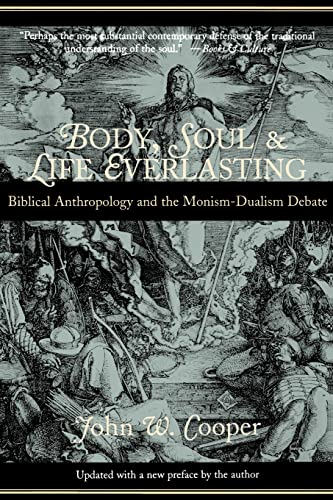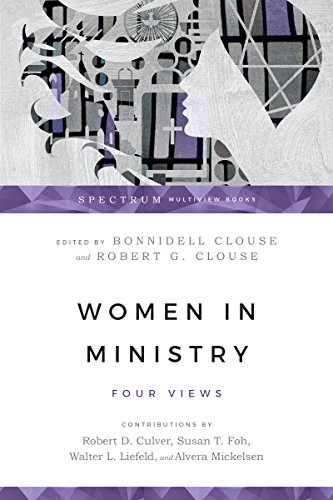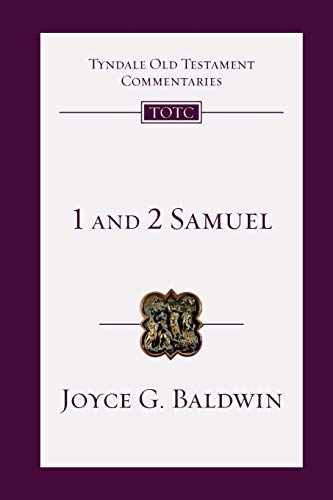The Way of Jesus Christ. Christology in Messianic Dimensions
Written by Jürgen Moltmann Reviewed By Tony LaneThis is the third of Moltmann’s ‘systematic contributions to theology’. The earlier volumes are The Trinity and the Kingdom of God (1980—ET 1981) and God in Creation (1985). Two more volumes are projected: on eschatology and on the foundations and methods of Christian theology.
The back cover cautiously suggests that ‘here perhaps is the most gripping of Professor Moltmann’s studies since The Crucified God’. This verdict would seem to be amply justified. Anyone who supposes that a theologian can no longer produce fresh and original theology in his mid-sixties will find sufficient counter-evidence here.
The preface helpfully sets out four major concerns of the book. First, this is a christology for the ‘post-modern’ world. The early church fathers produced a christology which was metaphysical and cosmological. Salvation is from the finitude and transience of human existence. Modern theology, by contrast, developed a christology which was historical rather than metaphysical and anthropological rather than cosmological. The emphasis of Moltmann’s christology is ecological. His aim is to move to ‘a post-modern christology, which places human history ecologically in the framework of nature’ (p. xvi). There is a strong emphasis upon Christ’s bodily nature and also upon the relation between humanity and the creation.
Secondly, this is ‘a christology against the horizon of eschatology’ (p. xv). This eschatological emphasis is one that will come as no surprise to those who are familiar with Moltmann’s theology. It involves no longer viewing Christ ‘statically, as one person in two natures or as a historical personality’. Instead, Moltmann seeks ‘to grasp him dynamically, in the forward movement of God’s history with the world’ (p. xiii). This is a picture of Christ on the way, tracing his ministry from his birth through to his parousia.
Thirdly, ‘christopraxis’ or discipleship plays a larger role here than in most books on christology. This ethical concern is one of the reasons for the choice of title (p. xiv). Finally, as in some of his earlier works, Moltmann engages in dialogue (or encounter, if one wants a fourth ‘e’) with Judaism (pp. xvi–xvii).
The scope of the book can best be seen by a brief review of the chapters. ‘The Messianic Perspective’ explores the origins and nature of the concept of messiahship, in both Judaism and Christianity. It concludes with a section specifically devoted to Jewish-Christian dialogue. Here Moltmann considers the Jewish charge that the messiah cannot have come because the world is not yet redeemed. This charge has some validity against the theocratic triumphalism of Christendom, which identifies the church with the kingdom of God. But it does not apply against a more biblical and eschatological approach to christology, which gives more weight to the fact that salvation is still to come. Jesus came as the Suffering Servant, not yet the Christ of the parousia.
‘Trends and Transmutations in Christology’ (chapter 2) traces the development of christology from the early church to the modern world to the ‘post-modern’ world. (It has to be said that the brief sketches of patristic and modern christologies are inevitably oversimplified.) Moltmann identifies three contradictions or crises of modern civilisation: poverty, especially in the Third World; the threat of nuclear inferno; the ecological soteriological relevance. In addition to contemporary relevance, christology must also have a Christian identity. This comes from faith in Christ and the biblical witness to him. It is worked out in the remaining chapters of the book which trace the five stages of ‘the way of Jesus Christ’, from his birth to his parousia.
The next three chapters of the book are the most substantial. ‘The Messianic Mission of Christ’ (chapter 3) covers Jesus’ life. Moltmann adopts a ‘Spirit christology’ approach, viewing Jesus in terms of his relation to the Father and the Holy Spirit. This is not to be seen as opposed to the idea of incarnation or to the doctrine of two natures. ‘The notion that there is an antithesis between an adoptionist and a pre-existence christology is a nineteenth-century invention’ (p. 74). While I would agree with Moltmann that there is no necessary antithesis, Cyril of Alexandria would be one among many early figures who might contest the claim for the originality of the nineteenth century in this matter. There are other major themes introduced in this chapter some of which will be considered below. ‘The Apocalyptic Sufferings of Christ’ (chapter 4) takes up and develops many of the themes of The Crucified God. A new and interesting theme is that of martyrology, seen as ‘the fellowship of Christ’s sufferings’. ‘The Eschatological Resurrection of Christ’ (chapter 5) develops the discussion of the resurrection in Theology of Hope, adding the new dimension of its relation not just to humanity but to nature.
The sixth chapter was originally to have been devoted to ‘the presence of Christ’, but this had been covered at some length in The Church in the Power of the Spirit, to which Moltmann refers the reader (p. xv). Instead the chapter is entitled ‘The Cosmic Christ’. Some of the themes of God in Creation are picked up and there is an interesting discussion of Christ’s relation to evolution, in response to Teilhard de Chardin. It is inadequate to view Jesus as Christus Evolutor, Christ-the Evolver. This overlooks the ambiguity of evolution and the numberless victims along the way who pay the price for progress, ‘A Christus evolutor without Christus redemptor is nothing other than a cruel, unfeeling Christus selector, a historical world-judge without compassion for the weak, and a breeder of life uninterested in the victims’ (p. 296). We need to think of Christ as the Redeemer of evolution.
Finally, ‘The Parousia of Christ’ (chapter 7), in which we have a foretaste of some of the themes of his next major work, on eschatology. Moltmann begins with a ‘little apologia for the expectation of the parousia’ as the fulfilment of the history of salvation. He also interprets the final judgment in terms of his universalism, arguing the latter at greater length than hitherto, though not necessarily with any greater success at showing it to be biblical.
This is an immensely stimulating book and there is much in it which is helpful. If the following comments inevitably focus more on points of disagreement this should not be taken to imply a negative judgement on the book as a whole.
As has been noted already, Moltmann seeks to expand a new approach to christology for the post-modern world. This transition to a new approach does not imply a rejection of the insights of the past. ‘Every christology is part of a grateful and critical dialogue with the christologies of predecessors and other contemporaries, setting its own tiny accents in this great dialogue about the messianic secret of Jesus Christ’ (p. 38). So where does that leave Moltmann in relation to the two-natures approach of Chalcedon? The answer here, as in his earlier works, is that this is not clear. Spirit christology is not ‘levelled at the doctrine of the two natures’ (p. 74). Again, ‘two-nature christology’ developed out of ‘dual New Testament definitions’ such as crucified-raised, humiliated-exalted, and ‘was in substance well able to retain the sense of these original definitions’ (pp. 48f.). But on the other hand, Moltmann expounds at length five impasses of two-nature christology (pp. 51–55), an explicit echo of Pannenberg’s ‘The Impasse of the Doctrine of the Two Natures’ (Jesus God and Man chapter 8). What is Moltmann trying to say here? In particular, how should we understand the human Jesus’ identity with the second person of the Trinity and by what means does that identity come about? The patristic doctrine of the two natures answers these questions. Should we assume that despite his criticisms of that doctrine here and elsewhere, Moltmann’s answer to these questions is some form of two-natures doctrine? Or should we understand that he wishes to look elsewhere for the answer? Either way, one would have hoped for a clear answer to this question in a major work devoted to christology.
One of the least satisfactory sections is that on ‘Christ’s Birth in the Spirit’ (chapter 3:2). The virgin birth is lumped together with Roman Catholic mariology and accordingly dismissed. The reader may be surprised to learn that the New Testament does not acknowledge Mary as ‘mother of the Christ’ (p. 78). As for the claim that it is ‘factually inappropriate to call the virgin birth historical, let alone “biological” ’ and that ‘the narrators’ aim is not to report a gynaecological miracle’ (p. 82), it would be interesting to see how Moltmann would exegete Matthew 1:18–25 from this perspective. I have discussed these issues more fully in D.F. Wright (ed.), Chosen by God (London, 1989), pp. 93–119.
The Sermon on the Mount is central to Moltmann’s interpretation of christopraxis, in keeping with his radical approach to social and political issues. The Sermon is the ‘messianic Torah’, which interprets and fulfils Israel’s Torah. It is for all people, not just for an élite or for a sect withdrawn from society. Its demands should not be seen as unreasonable. But can it be fulfilled? Anyone who denies that it can be fulfilled, not just in the heart, not just in personal life, but in public action, mocks God, says that Jesus is wrong and stifles the truth of the community of Christ (chapter 3:7:3). Strong words, not least because they condemn the majority of interpreters of the Sermon. Moltmann’s approach has the merit of interpreting the Sermon in a simple straightforward fashion, without seeking to explain it away. But I remain unconvinced. I would like to see how Moltmann would interpret Matthew 5:38f. in terms of ‘public action’ when it comes to running a police force or handling international relations. As elsewhere, Moltmann’s application of his theology is stimulating and challenging, but might be said to lack political realism.
This leads to the question of Moltmann’s political stance. Here, as in his other works, he brings particular political convictions to his subject. This can be illustrated from his discussion of poverty. Who are the poor and why are they poor? The poor of the Third World are poor as a result of oppression by the First World. The poor are also to be found in the unemployed and disadvantaged of the First World (pp. 64–66). There is no mention of the Second (communist) World, which was still intact when this book first appeared (in German). Are we to assume that there are no poor in countries such as Albania and Russia? The clear implication of this passage, as others in Moltmann, is that it is the liberal capitalism of the West which has created poverty, both in the Third World and at home. This is at best dangerously one-sided. It is true that some aspects of the West’s treatment of the Third World (such as the debt crisis) have increased poverty. But there is another, more positive, side to the relationship and it is by no means obvious that the Third World is poorer than it would be if it had had no contact with the West. Again, there are many other factors which contribute towards the problem of poverty, such as climate, population explosion, war, economic and political mismanagement, corruption, lack of work ethic, etc. To blame all this upon the West is to attribute to it an unwarranted omnipotence. Treating the West as the cause of Third-World poverty is counterproductive because it encourages simple solutions and distracts attention from many of the problems.
As in his earlier works, Moltmann insists on the reality of the resurrection. At first sight one might get the impression that this is being spiritualised. While the cross is a historical fact, the resurrection is an apocalyptic happening (p. 214). Jesus’ appearances to his disciples are called ‘exceptional visionary experiences’ (p. 216). Moltmann accepts that the tomb was empty, but ‘the proclamation that Jesus had been raised from the dead is not an interpretation of the empty tomb’ (p. 222). This does not, however, mean that Moltmann is trying to spiritualise the resurrection. ‘Christ’s resurrection is bodily resurrection, or it is not a resurrection at all’ (p. 256f.). Indeed, if there is no material “resurrection of the body” there is no personal “resurrection of the dead” either’ (p. 260). As in his earlier works, Moltmann rejects the Greek dualism between soul and body. ‘Eternal life can only be bodily life; if it is not that it is not life at all’ (p. 259). The reluctance to call the resurrection a historical event does not mean that Moltmann wishes to reduce it to the Easter faith of the disciples (as did Bultmann) or even that he is willing to dehistoricise it in the manner of Barth. Rather he wishes to stress that the resurrection was not Jesus’ return to this earthly life. It is an eschatological event in that it is the beginning of the general resurrection of the dead.
Moltmann’s ecological emphasis leads him to introduce a new idea into his interpretation of the cross and resurrection. The cross does not relate to human beings alone. Christ died in solidarity with us, ‘but he also died in solidarity with all living things, which have to die although they want to live’ (p. 253). Christ ‘died “the death of all the living” so as to reconcile everything in heaven and on earth, which means the angels and the beasts too, and to bring peace to the whole creation’ (p. 255). It follows that ‘every created being enjoys infinite value in God’s sight, and has its own right to live; this is not true of human beings alone’ (p. 256). There are, however, serious problems with this claim. Is the life of a mosquito of infinite value in God’s sight? If so, do I have the right to swat it before it can bite me? If every insect is of infinite value, should I not follow those Hindus who sweep the path before them so as not to step on one? While the desire to give value to the whole of creation is to be commended, this approach to it would seem to raise at least as many questions as it resolves.
The translation is generally clear, though there is one peculiarity. The Holy Spirit is almost without exception referred to as ‘it’. (The German word is ‘er’ [masculine], though the German word for Spirit is itself masculine: der Geist.) In The Trinity and the Kingdom of God Moltmann argues that the Spirit is a divine person in his own right, not just an energy of the Father and the Son (pp. 125f.). In that book, the same translator intermingles ‘he’ and ‘it’ for the Spirit, while in this work the latter predominates.
In conclusion, this is a major and stimulating contribution to contemporary theological debate, from which there is much to be learned.
Tony Lane
London School of Theology






